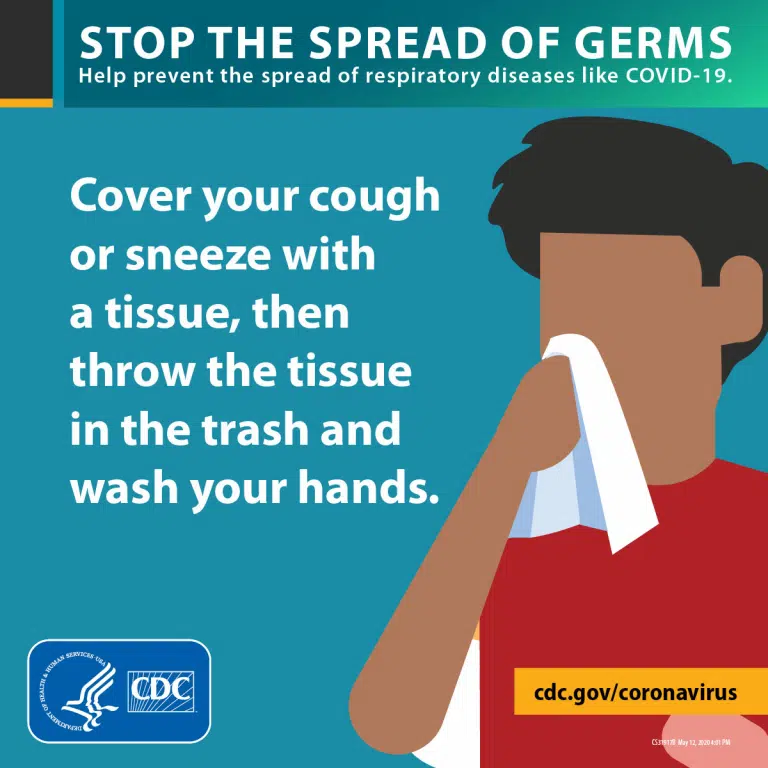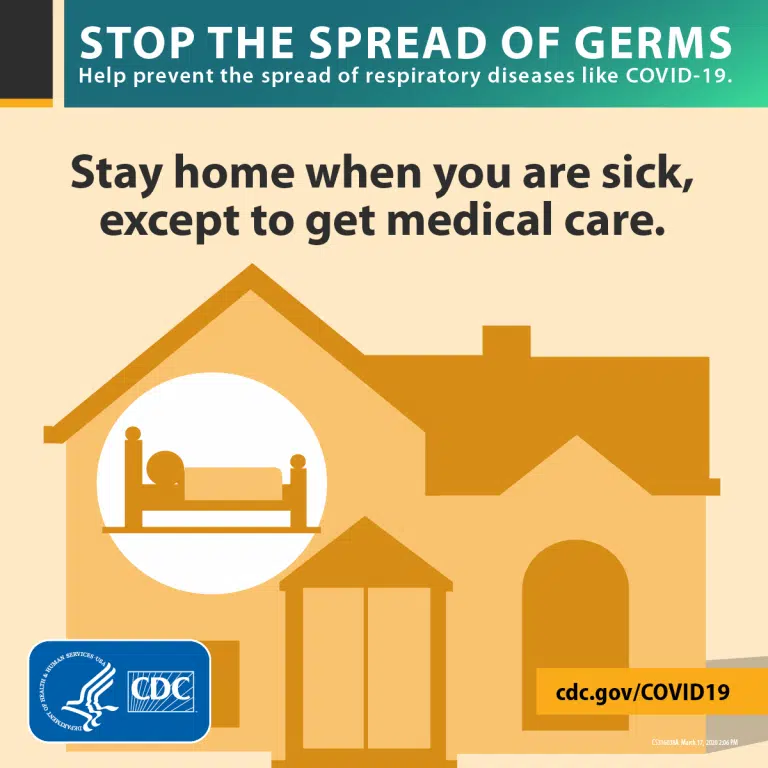COVID-19/Coronavirus Information Center
What is COVID-19 (Novel Coronavirus)
A novel coronavirus is a new coronavirus that has not been previously identified. The virus causing coronavirus disease 2019 (COVID-19), is not the same as the coronaviruses that commonly circulate among humans and cause mild illness, like the common cold. On February 11, 2020 the World Health Organization announced an official name for the disease that is causing the 2019 novel coronavirus outbreak, first identified in Wuhan China. The new name of this disease is coronavirus disease 2019, abbreviated as COVID-19. In COVID-19, ‘CO’ stands for ‘corona,’ ‘VI’ for ‘virus,’ and ‘D’ for disease. There are many types of human coronaviruses including some that commonly cause mild upper-respiratory tract illnesses. COVID-19 is a new disease, caused be a novel (or new) coronavirus that has not previously been seen in humans.
How is the Virus Spread
This virus was first detected in Wuhan City, Hubei Province, China. The first infections were linked to a live animal market, but the virus is now spreading from person-to-person. Some viruses are highly contagious (like measles), while other viruses are less so. The virus that causes COVID-19 seems to be spreading easily and sustainably in the community (“community spread”) in some affected geographic areas. Community spread means people have been infected with the virus in an area, including some who are not sure how or where they became infected. Learn what is known about the spread of newly emerged coronaviruses.
The virus is thought to spread mainly between people who are in close contact with one another (within about 6 fee) through respiratory droplets produced when an infected person coughs or sneezes. It also may be possible that a person get COVID-19 by touching a surface or object that has the virus on it, and then, touching their own mouth, nose, or possibly eyes. However, this is not thought to be the main way the virus spreads.(Source: CDC)
What are the symptoms
The following symptoms may appear 2-14 days after exposure.*
- Fever
- Cough
- Shortness of breath
How can you protect yourself
- There is currently no vaccine to prevent coronavirus disease 2019 (COVID-19). The best way to prevent illness is to avoid being exposed to this virus. The virus is thought to spread mainly from person-to-person.
- Between people who are in close contact with one another (within about 6 feet).
- Through respiratory droplets produced when an infected person coughs or sneezes. These droplets can land in the mouths or noses of people who are nearby or possibly be inhaled into the lungs.
- Clean your hands often
- Wash your hands often with soap and water for at least 20 seconds especially after you have been in a public place, or after blowing your nose, coughing, or sneezing.
- If soap and water are not readily available, use a hand sanitizer that contains at least 60% alcohol. Cover all surfaces of your hands and let them air dry.
- Avoid touching your eyes, nose, and mouth with unwashed hands.
- Older adults and people who have severe underlying chronic medical conditions like heart or lung disease or diabetes seem to be at higher risk for developing more serious complications from COVID-19 illness. Please consult with your health care provider about additional steps you may be able to take to protect yourself.
- Stay home if you are sick, except to get medical care. Learn what to do if you are sick.
- Cover your mouth and nose with a tissue when you cough or sneeze or use the inside of your elbow. Throw used tissues in the trash. Immediately wash your hands with soap and water for at least 20 seconds. If soap and water are not readily available, clean your hands with a hand sanitizer that contains at least 60% alcohol.
- Clean AND disinfect frequently touched surfaces daily. This includes tables, doorknobs, light switches, countertops, handles, desks, phones, keyboards, toilets, faucets, and sinks.
- Wear a facemask if you are sick
- If you are sick: You should wear a facemask when you are around other people and before you enter a healthcare provider’s office. If you are NOT sick: You do not need to wear a facemask unless you are caring for someone who is sick.
Resource Numbers
Illinois COVID-19 Hotline (Illinois Department of Public Health): 1-800-889-3931
Macon County Health Department: (217) 423-6988
Center For Disease Control and Prevention: 800-232-4636 open 24/7
Mental Health Resources
Heritage Behavioral Health Crisis Support: (217) 362-6262
Memorial Behavioral Health Hotline: (217) 588-5509
SAMHSA Disaster Distress Helpline: 1-800-985-5990 or Text ‘TalkWithUs’ to 66746




So you think you have Coronavirus…what now?
March 15, 2020 – You develop a little cough. Maybe you’re feeling run down. Maybe you feel you might have a low-grade fever. You are starting to think you have Coronavirus. What do you do?
The first thing YOU DO NOT DO is go to the ER, Urgent Care or show up at your doctor’s office. State health officials and the CDC say doing so can only put you and others at risk.
So what do you do?
If you think you might have Coronavirus, the first thing to do is CALL your health care provider. If you have mild symptoms, your healthcare provider may ask you to self-quarantine and avoid contact with others. Feeling symptoms does not mean you will be tested for the virus.
Why? Because there are people who need to be tested more than you.
Criteria for testing has indeed expanded as of March 12th due to community spread, meaning you maybe haven’t traveled recently or haven’t been in contact with someone who is infected. But this doesn’t mean symptoms alone will warrant a test. Until recently, tests were in short supply. IDPH recently announced the approval of several private labs that will increase the number of tests performed. But your healthcare provider will still likely follow testing criteria.
When you call your healthcare provider, you will be asked questions to determine your need for a test. Those criteria now include:
Fever and signs of lower respiratory illness ( cough/ shortness of breath)
AND any of the following epidemiologic or other factors:
- Contact: Any person, including health care workers, who have had close contact with a laboratory-confirmed COVID-19 patient within 14 days of symptom onset
- Travel: A history of travel from affected geographic areas within 14 days of symptom onset (currently China, South Korea, Iran, Italy, parts of Europe, and Japan)
- Congregant living or Healthcare facility: The individual is from a congregate living or health care facility (staff and/or patient/resident) with clusters of infection not due to influenza and suspected to be due to COVID-19, as determined in collaboration with public health authorities
- Medical risk factors: The patient is at higher risk for complications from COVID-19 and for whom rapid test results are more likely to impact clinical care/outcomes (e.g. older adults (age ≥ 65 years)) OR is an individual with chronic medical conditions and/or an immunocompromised state that may put them at higher risk for poor outcomes. Those conditions include but are not limited to diabetes, heart disease, receiving immunosuppressive medications, chronic lung disease, chronic kidney disease.
- Public health concern: Other situations involving patients that clinicians have thoroughly evaluated and are deemed high priority after consultation with public health.
- Hospitalization: Hospitalized patients with unexplained pneumonia where a physician has evaluated the patient and is concerned about COVID-19
If you are a healthy individual that does not meet these guidelines, the Illinois Department of Public Health advises you to stay home, distance yourself from others, practice good hygiene and treat yourself for symptoms as you would the flu. That includes staying hydrated, getting plenty of sleep and (if advised by your physician) taking over the counter medicine to reduce fever and symptoms.
